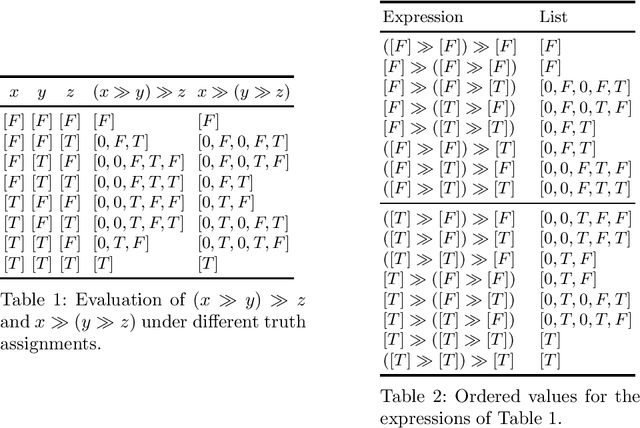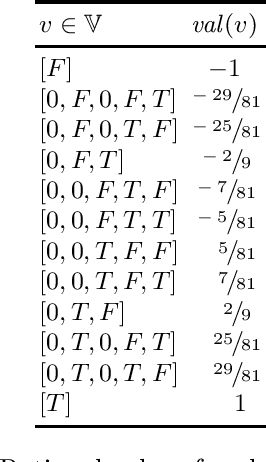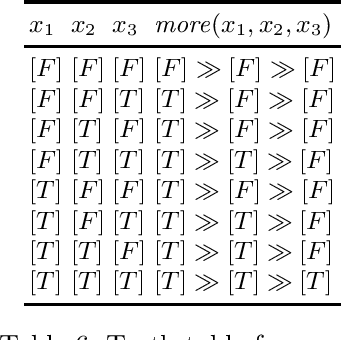Panos Rondogiannis
Recursive Function Definitions in Static Dataflow Graphs and their Implementation in TensorFlow
Oct 26, 2024Abstract:Modern machine learning systems represent their computations as dataflow graphs. The increasingly complex neural network architectures crave for more powerful yet efficient programming abstractions. In this paper we propose an efficient technique for supporting recursive function definitions in dataflow-based systems such as TensorFlow. The proposed approach transforms the given recursive definitions into a static dataflow graph that is enriched with two simple yet powerful dataflow operations. Since static graphs do not change during execution, they can be easily partitioned and executed efficiently in distributed and heterogeneous environments. The proposed technique makes heavy use of the idea of tagging, which was one of the cornerstones of dataflow systems since their inception. We demonstrate that our technique is compatible with the idea of automatic differentiation, a notion that is crucial for dataflow systems that focus on deep learning applications. We describe the principles of an actual implementation of the technique in the TensorFlow framework, and present experimental results that demonstrate that the use of tagging is of paramount importance for developing efficient high-level abstractions for modern dataflow systems.
The Stable Model Semantics for Higher-Order Logic Programming
Aug 20, 2024Abstract:We propose a stable model semantics for higher-order logic programs. Our semantics is developed using Approximation Fixpoint Theory (AFT), a powerful formalism that has successfully been used to give meaning to diverse non-monotonic formalisms. The proposed semantics generalizes the classical two-valued stable model semantics of (Gelfond and Lifschitz 1988) as-well-as the three-valued one of (Przymusinski 1990), retaining their desirable properties. Due to the use of AFT, we also get for free alternative semantics for higher-order logic programs, namely supported model, Kripke-Kleene, and well-founded. Additionally, we define a broad class of stratified higher-order logic programs and demonstrate that they have a unique two-valued higher-order stable model which coincides with the well-founded semantics of such programs. We provide a number of examples in different application domains, which demonstrate that higher-order logic programming under the stable model semantics is a powerful and versatile formalism, which can potentially form the basis of novel ASP systems.
Strong Equivalence of Logic Programs with Ordered Disjunction: a Logical Perspective
May 10, 2022Abstract:Logic Programs with Ordered Disjunction (LPODs) extend classical logic programs with the capability of expressing preferential disjunctions in the heads of program rules. The initial semantics of LPODs, although simple and quite intuitive, is not purely model-theoretic. A consequence of this is that certain properties of programs appear non-trivial to formalize in purely logical terms. An example of this state of affairs is the characterization of the notion of strong equivalence for LPODs. Although the results of Faber et al. (2008) are accurately developed, they fall short of characterizing strong equivalence of LPODs as logical equivalence in some specific logic. This comes in sharp contrast with the well-known characterization of strong equivalence for classical logic programs, which, as proved by Lifschitz et al. (2001), coincides with logical equivalence in the logic of here-and-there. In this paper we obtain a purely logical characterization of strong equivalence of LPODs as logical equivalence in a four-valued logic. Moreover, we provide a new proof of the coNP-completeness of strong equivalence for LPODs, which has an interest in its own right since it relies on the special structure of such programs. Our results are based on the recent logical semantics of LPODs introduced by Charalambidis et al. (2021), a fact which we believe indicates that this new semantics may prove to be a useful tool in the further study of LPODs.
A Logical Characterization of the Preferred Models of Logic Programs with Ordered Disjunction
Aug 07, 2021
Abstract:Logic Programs with Ordered Disjunction (LPODs) extend classical logic programs with the capability of expressing alternatives with decreasing degrees of preference in the heads of program rules. Despite the fact that the operational meaning of ordered disjunction is clear, there exists an important open issue regarding its semantics. In particular, there does not exist a purely model-theoretic approach for determining the most preferred models of an LPOD. At present, the selection of the most preferred models is performed using a technique that is not based exclusively on the models of the program and in certain cases produces counterintuitive results. We provide a novel, model-theoretic semantics for LPODs, which uses an additional truth value in order to identify the most preferred models of a program. We demonstrate that the proposed approach overcomes the shortcomings of the traditional semantics of LPODs. Moreover, the new approach can be used to define the semantics of a natural class of logic programs that can have both ordered and classical disjunctions in the heads of clauses. This allows programs that can express not only strict levels of preferences but also alternatives that are equally preferred. This work is under consideration for acceptance in TPLP.
Lexicographic Logic: a Many-valued Logic for Preference Representation
Dec 20, 2020



Abstract:Logical formalisms provide a natural and concise means for specifying and reasoning about preferences. In this paper, we propose lexicographic logic, an extension of classical propositional logic that can express a variety of preferences, most notably lexicographic ones. The proposed logic supports a simple new connective whose semantics can be defined in terms of finite lists of truth values. We demonstrate that, despite the well-known theoretical limitations that pose barriers to the quantitative representation of lexicographic preferences, there exists a subset of the rational numbers over which the proposed new connective can be naturally defined. Lexicographic logic can be used to define in a simple way some well-known preferential operators, like "$A$ and if possible $B$", and "$A$ or failing that $B$". Moreover, many other hierarchical preferential operators can be defined using a systematic approach. We argue that the new logic is an effective formalism for ranking query results according to the satisfaction level of user preferences.
Minimum Model Semantics for Extensional Higher-order Logic Programming with Negation
May 15, 2014Abstract:Extensional higher-order logic programming has been introduced as a generalization of classical logic programming. An important characteristic of this paradigm is that it preserves all the well-known properties of traditional logic programming. In this paper we consider the semantics of negation in the context of the new paradigm. Using some recent results from non-monotonic fixed-point theory, we demonstrate that every higher-order logic program with negation has a unique minimum infinite-valued model. In this way we obtain the first purely model-theoretic semantics for negation in extensional higher-order logic programming. Using our approach, we resolve an old paradox that was introduced by W. W. Wadge in order to demonstrate the semantic difficulties of higher-order logic programming.
Minimum Model Semantics for Logic Programs with Negation-as-Failure
Jun 03, 2003Abstract:We give a purely model-theoretic characterization of the semantics of logic programs with negation-as-failure allowed in clause bodies. In our semantics the meaning of a program is, as in the classical case, the unique minimum model in a program-independent ordering. We use an expanded truth domain that has an uncountable linearly ordered set of truth values between False (the minimum element) and True (the maximum), with a Zero element in the middle. The truth values below Zero are ordered like the countable ordinals. The values above Zero have exactly the reverse order. Negation is interpreted as reflection about Zero followed by a step towards Zero; the only truth value that remains unaffected by negation is Zero. We show that every program has a unique minimum model M_P, and that this model can be constructed with a T_P iteration which proceeds through the countable ordinals. Furthermore, we demonstrate that M_P can also be obtained through a model intersection construction which generalizes the well-known model intersection theorem for classical logic programming. Finally, we show that by collapsing the true and false values of the infinite-valued model M_P to (the classical) True and False, we obtain a three-valued model identical to the well-founded one.
* 28 pages
 Add to Chrome
Add to Chrome Add to Firefox
Add to Firefox Add to Edge
Add to Edge